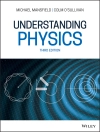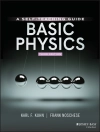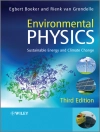This monograph investigates the development of hydrostatics as a science. In the process, it sheds new light on the nature of science and its origins in the Scientific Revolution. Readers will come to see that the history of hydrostatics reveals subtle ways in which the science of the seventeenth century differed from previous periods.
The key, the author argues, is the new insights into the concept of pressure that emerged during the Scientific Revolution. This came about due to contributions from such figures as Simon Stevin, Pascal, Boyle and Newton. The author compares their work with Galileo and Descartes, neither of whom grasped the need for a new conception of pressure. As a result, their contributions to hydrostatics were unproductive.
The story ends with Newton insofar as his version of hydrostatics set the subject on its modern course. He articulated a technical notion of pressure that was up to the task. Newton compared the mathematical way in hydrostatics and the experimental way, and sided with the former. The subtleties that lie behind Newton’s position throws light on the way in which developments in seventeenth-century science simultaneously involved mathematization and experimentation.
This book serves as an example of the degree of conceptual change that new sciences often require. It will be of interest to those involved in the study of history and philosophy of science. It will also appeal to physicists as well as interested general readers.
Tabela de Conteúdo
Chapter 1. The theoretical challenge posed for seventeenth century mechanics by fluids.- Chapter 2. The background to Simon Stevin’s hydrostatics.- Chapter 3. Moving beyond Archimedes: The hydrostatics of Simon Stevin.- Chapter 4. Galileo, floating bodies and the balance.- Chapter 5. Descartes’ engagement with hydrostatics.- Chapter 6. Pascal on the equilibrium of liquids.- Chapter 7. Experimenting with, and theorizing about, air.- Chapter 8. Boyle and the concept of pressure.- Chapter 9. Newton’s hydrostatics: Pressure in a continuum, following Boyle, rather than corpuscle pressing on corpuscle, following Descartes.- Chapter 10. Reflections on the role of theory and experiment in the emergence of hydrostatics.- Chapter 11. Reflections on the significance of the history of hydrostatics: What was revolutionary about the scientific revolution?
Sobre o autor
Alan F. Chalmers is the author of What is this thing called science? (1976, 1982, 1999, 2013) which has been translated into eighteen languages and has been a basic text in philosophy of science for four decades. He is also the Author of Science and its Fabrication (1990) , The Scientist’s atom and the philosopher’s stone (2009) and over fifty journal articles on the history and philosophy of the physical sciences. His interests are in the history and philosophy of the physical sciences.
Having acquired a Ph D in History and Philosophy of Science at the University of London in 1971 he moved to the University of Sydney where he remained employed until my ‘retirement’ in 2000. In the late 1980s Alan set up the Unit for History and Philosophy of Science that has flourished and is flourishing.
His retirement has given him more time to devote to his research. He has been able to take advantage of Visiting Fellowships at the Dibner Institute for History of Science and Technology, The Centre for Philosophy of Science, University of Pittsburgh and the Institute for Advanced Study at the University of Durham. On three separate occasions he has been a Visiting Scholar at the Max Planck Institute for the History of Science, and is two weeks into the third of these as this is written.












